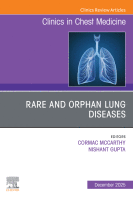DIAGNOSTIC THORACOSCOPY - 09/09/11
Résumé |
The use of thoracoscopy has been resumed as a result of considerable progress in modern techniques, particularly in the following areas: (1) Endoscopic telescopes have been greatly improved, and now have an extremely high optical quality in spite of their small diameter. (2) Adequate instruments, including video camera, forceps, endoscopic scalpel, stapler, and laser, enable the physician or surgeon to carry out interventional thoracoscopy in endoscopic pleurectomy, pulmonary biopsy, blebs resection, mediastinal lymph node biopsy, pericardial window or biopsy, dorsal sympathectomy, pleural brushing, and so on. (3) Progress in anesthesia allows for a broad choice of agents that range from local anesthetics in outpatients to general anesthetics.
Thoracoscopy, while allowing full exploration of the thoracic cavity, is much less invasive and incapacitating than thoracotomy. Complications are uncommon and rarely occur when the procedure is performed by one who has mastered the technique.
In diagnosing pleural effusions, video thoracoscopy performed by a specially trained pulmonologist or thoracic surgeon is only slightly more invasive than a simple percutaneous pleural needle biopsy but provides infinitely more information. In all cases in which a chest tube is required, it should take a pulmonologist only a few minutes to first introduce an endoscope by way of the same incision to inspect the pleura, locate the adhesions, and verify that the tube will be well positioned. In patients with mesothelioma, thoracoscopy is the only procedure able to give a diagnosis at the first stage (IA) of the disease. Simplicity and effectiveness therefore are the key words in modern diagnostic thoracoscopy.
In addition to visualizing the pleural surfaces, the lung itself can be examined. In spontaneous pneumothorax, minute emphysematous bullous lesions and blebs are seen in nearly all patients when examined with high-resolution equipment. It now therefore is reasonable to assert that there can be no “normal lung” in spontaneous pneumothorax. The information obtained via the thoracoscope in such patients often is superior to that seen by CT scan or any other technique short of thoracotomy.
Le texte complet de cet article est disponible en PDF.Plan
| Address reprint requests to Christian Boutin, MD, Department of Pulmonology, Hôpital de la Conception - 147 Bd Baille, 13005 Marseille - France |
Vol 19 - N° 2
P. 295-309 - juin 1998 Retour au numéroDéjà abonné à cette revue ?



